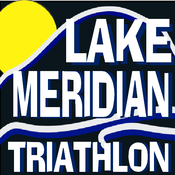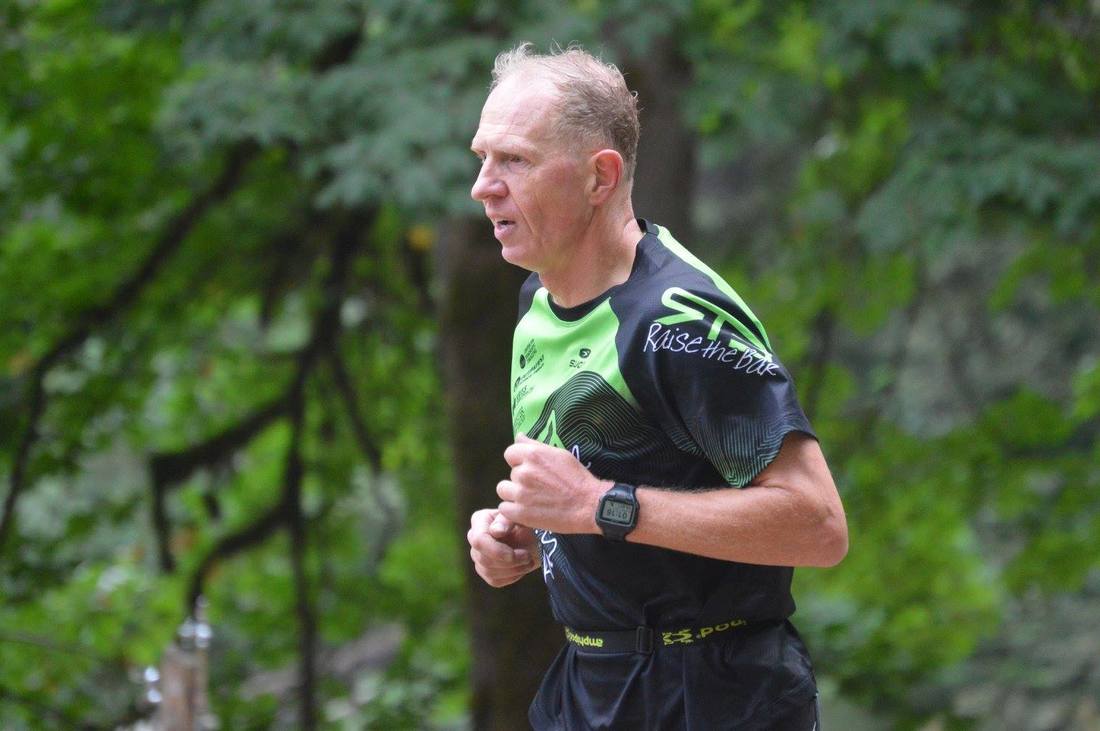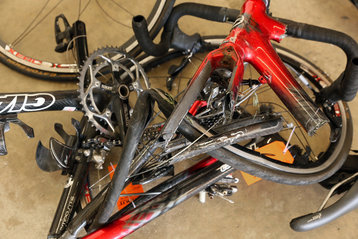 ~diagnosing, repairing, and replacing your bike after a collision. By Lance Hester Whenever we handle vehicle related injury claims, two claims typically exist – the personal injuries, and the property damage. In car accident cases, the property damage tends to get resolved without our participation (eg. Car is totaled, insurance pays claimant the market value for the car). The bodily injury side of the case, on the other hand, takes months, if not longer, requires lots of calculations and records reviews, and ultimately resolves after many sessions of negotiations or a trial or arbitration. You don’t have to look too far down the racks at the Lake Meridian Triathlon, the Black Diamond, or any of the Ironman events before your senses cause drooling at the sight of a Cervelo P5 with carbon fiber everything – wheels, bottle cages, handle bars – not to mention electronic gears, gps cycle computers, and power metered pedals. Something like that, my friends, is worth more than the car I show up in on race day. Sources For Your Expensive Mess So what’s a cyclist to do when the love of his Saturday morning training sessions is battered, or worse, by a negligent driver? Here’s a checklist for determining the future of your bike.
 Bike Diagnosis and Valuation: While insurance claims managers are becoming more familiar with bicycle claims, you may find yourself in the position of having to educate him or her as to the issues relevant to your loss. To fully make your case, you will be wise to do two things as comprehensively before making a demand: 1. Have your bike’s injuries diagnosed; 2. Assemble a report on valuation. Diagnosis: Some of this can be DIY. In obvious cases, make sure you have lots of photos of your bent or broken frame, damaged wheels, and scratches and scrapes. If you’ve got a carbon fiber bike, make sure to have lots of photos, but also check with an experienced shop to see if they are willing to inspect, photograph and document the bike’s injuries. You should also check with the manufacturer. Some manufacturers will be willing to analyze the problems as they determine whether the bike falls under a warranty. The manufacturer may take interest in examining how its product withstood (or not) the forces of impact during the collision. I have read an article by a colleague who suggests traditional medical imaging (CT scans) for determining continuing carbon fiber safety. Small cracks in a carbon fiber frame can mean the entire integrity of the bike is compromised and needs replacing. Valuation: Gather what you can. If you purchased your bike new, find the receipt. If it needs repair, have your experienced shop produce a repair estimate; if it needs replacing, see if they can document the current replacement cost as well as a possible comparison they may have taken in for a certain trade-in value. And again, find whatever comparables you can in the marketplace. And finally, don’t forget loss of use. This is most important for commuters. In the event of lost use of your bike, just as if it were a car, you may be entitled to a rental while the diagnosis, valuation, and replacement negotiations are pending. Figure out the per day amount and what duration is allowed, and see if you can’t get right back on the bike. This is all about the bike. Next time, we’ll talk about the injured human, and insurance sources for protecting cyclists and, Heaven forbid, those whom cyclists may accidentally injure during races or training. Lance Hester is one of five partners who are active cyclists, runners, and swimmers at the Hester Law Group, a firm that takes cases in Washington, Idaho, and beyond, and is a proud sponsor of Raise the Bar and the events it hosts.
0 Comments
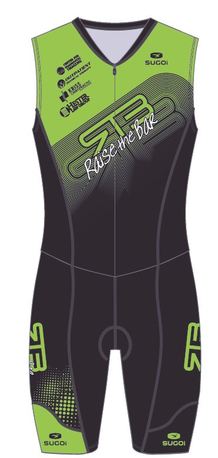 Q. What is new this year with the uniforms? A. We have a NEW DESIGN. There isn't a change in colors or sponsors, but the uniform do look different (see photo). There have been changes in the patterns and Sugoi is using a new manufacturer. So you will see some changes in the clothing. Q. Do I need to buy a new uniform this year? A. We really, really would like everyone to race in a current race top in 2017 as a minimum requirement. If you wear plain black shorts, then those are not in conflict. If you absolutely cannot purchase a race top, we will ask that you borrow from a team member or borrow from our lender tri top program. Though remember not all sizing will be available in that program. Q. What should I know about this clothing? New clothing options include: Running Singlet and Running Short Sleeve Top. Tri clothing is in two lines RS and RSE. The RSE tops and tri suits have the short sleeves and the RS are the tank style. The RSE and RS Tri Shorts have different chamois. There are two lines for bike clothing, the Evolution and the RS. The Evolution will be a bit looser fit then the RS. There are two jacket choices, an Evolution Windblock and a RS Thermal. The Windblock is a lighter weight jacket and the Thermal thicker, colder weather jacket. Q. How do I know what size to get? A. Sizing is always challenging. We will have some sample items at Northwest Tri and Bike in the upcoming weeks to try on. We will not have everything that is available. But if you wear a size medium in one style, you would wear a size medium in all styles. See the schedule for the Fit Kit below. More help here: Sugoi Chamois, Fabrics and Fit Information Q. What is the Fit Kit (sample clothing) schedule? A. The Fit Kit (samples of the clothing) will be at Northwest Tri and Bike to try on. The Fit Kit is arriving in groups. (M/W= men/women options available) Group 1: The RSE Tri Top (M/W), RSE Tri Shorts (M/W), RSE Tri Suit (M/W) and Singlet (M/W) will be available starting 3/30. Group 2 The Evolution Bib Shorts, Men Evolution Jersey, RS Tri Tank Women, RS Tri Short Women, RS Tri Tank Men and RS Pro Bib Shorts Men will be available approx. 4/12. Group 3: Evolution Jersey Women, RS Pro Bib Shorts Women, RS Tri Short Men, Turbo Tees (M/W), RS Training Jersey (M/W) will be available approx. 4/18. Group 4: Jackets will be available approx. 4/6 If an item is not listed on the Fit Kit list above, we are not getting it as a sample.(Check bike shop hours) The first order will close on Monday, April 10 at 11:59 PM. Each group of Fit Kit clothing will be at NWTB for approx. 2 weeks before being sent back to Sugoi. We will open additional clothing orders after this initial order. Q. What does it mean “Image to Come RTB” in the online store? A. Those items are still in pre-production. As soon as the patterns are completed a photo will be inserted. You can still order these items and all of them are set to ship in the first order. You can also see the date that the photo should be added to the store. If you click on the “Image to Come” photo, you can see a written description of the item. Q. What are my shipping options? A. You will have two options for shipping- either shipped to NWTB at no additional charge or ship to your home for a flat fee of $10 ($9.13 plus tax). If you want the clothing shipped to your home, please select drop shipping from the shopping list with the clothing. If you have it shipped to NWTB, you will be responsible for pick up in a reasonable amount of time. Q. Will there be another order? A. We will do additional orders, but the clothing will take up to up to 6 weeks after that order closes to arrive. So if you have an early season race that you want a uniform for, order that in the first order and then if you would like to order some additional items, there will be a few other opportunities. ORDER PROCESS BELOW! 1. Click on this link to go to the order site: https://www.sugoicustomorder.com/Raisethebar2017 2. You will see the store at this point, use the log on option on the right hand corner of the page before starting shopping. New users will need to click on New User to create your new User ID and Password. If you already have a username and password, click log in to put in your info. 3. Find the items you would like to purchase. Click either on the name of the item or the photo. Select gender, size and quantity and add to cart. If you would like to purchase more items then click continue shopping. 4.Make sure if you want the items shipped direct to your home that you select drop shipping from the clothing list. If you do not, the clothing will need to be picked up at NWTB when it arrives. 5. After the order deadline date has passed, you will no longer be able to access the order site. If you have not completed the checkout process for your order by this date, any items in your cart will be removed. The Order Deadline is displayed on the order homepage. 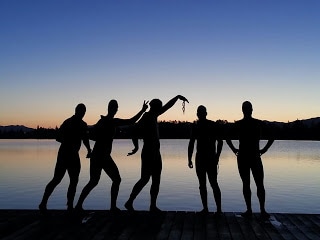 In the past Kriss Chiropractic sponsored a pretty good triathlon team. It was a great idea to have Kriss Chiropractic stamped on as many high performing athletes as we could find. Then I was humbled at the Coure d’ Alene Ironman trying to finish my run when Benny Swedberg said that I should join RTB. I told him he should join my team. We sparred back-and-forth a few times on the out and backs until at the end of the race a certain RTB athlete in my age group beat me on the run. I admitted Benny was right, we should join RTB. Read More Here  By Holly Pennington, PT, DPT/Outpatient Physical Therapy Rotator cuff, Iliotibial band, Patellar tendon, and Achilles tendon: What two things do these body parts have in common?
Aptly named the “cord of Achilles” after a Greek war hero who was believed to have one vulnerable heel after his mother dipped the rest of his body in a river to coat him in invincibility, the Achilles is the thickest tendon in the body and one of the most common sites of rupture. 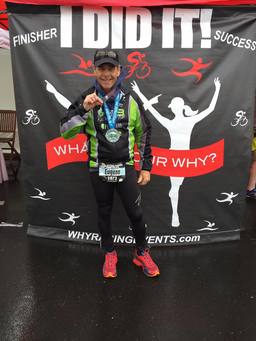 Eugene Partridge, a 30-year triathlon veteran and Raise the Bar (RTB) team member, was cycling at mile 88 during the 2013 Coeur d’Alene training camp in 2013 when he sustained a flat tire - and more. After stopping to repair the tire in cool weather, he felt his left Achilles tendon stiffen. When he climbed back on the bike, the tendon ruptured. Eugene recalls Kathy Morrisson stopping to check on him; he told her that he was “fine” and could complete the ride. After two weeks and “lots of denial,” he saw his podiatrist. Due to the palpable hole in the Achilles tendon, the doctor did not have to do an MRI to diagnose the rupture. He received the news that surgical repair would be needed, followed by physical therapy. Surgery coupled with months of rehabilitation can seem like a triathlete’s worst nightmare. But, Eugene shares a different perspective: HP: How many years post-physical therapy are you now? EP: I am three years post-surgery. I am competing at a high-level for my age; I am arguably a better swimmer and a better cyclist than I had been prior to my injury. My left Achilles tendon is 100% pain-free. HP: How is your triathlon training going now compared to pre-injury training? EP: I had been running on a sore Achilles tendon since I was 10 years old. I am 100% pain-free now, thanks to physical therapy at Outpatient Physical Therapy. I am very diligent in my core exercises to prevent other lower extremity injuries. HP: How did you stay fit while you were injured/recovering and unable to train as usual? EP: During the acute phases, of surgery and post-surgery in physical therapy, I mostly stretched. I cut my caloric intake in half. I learned I could cycle around the neighborhood with one leg, I could also do elliptical with one leg. I did a lot of stretching, a lot of core exercises and too many push-ups to count. HP: Do you feel PT sped up your return to training/competing? EP: There is no doubt that physical therapy sped up my recovery. The physical therapist and the physical therapy assistant helped me to understand that I needed to rehab not only my injured side, but also my non-injured side. To succeed, I needed to be symmetric: the exercises on my injured left side were always expected to carry over to the non-injured right side. The therapist could always tell if I was or wasn't doing the exercises at home.  HP: What did you learn in physical therapy that may be applicable to other RTB triathletes? EP: Outpatient Physical Therapy seems to understand that all people, whether triathletes or homebodies, are in one way or another athletic. The physical therapist and physical therapy assistant not only treat your injury but are interested in the whole person: your family, your job, your life at home. They understand your goals. Initially I just wanted to be able to walk again - let alone run, cycle or swim. I am very fortunate to have found Outpatient Physical Therapy to help me with my rehab. My outcome, considering the severity of my injury, was exceptional because of their dedication to me. I was pushed much harder than I expected, I left each session rather spent, for my own good. HP: What advice would you give other RTB triathletes about choosing a Physical Therapist? EP: If you have an injury, and it's not resolving with rest, and you're running cycling or swimming with pain, by all means stop in at Outpatient Physical Therapy. They can help keep the situation from getting worse, they can better understand how your form or lack of it is adversely affected you, and they can correct your deficiencies and make you a better athlete. The goals of therapy are to reduce pain, improve movement in motion, maintain stability, and improve function. At the root of their therapy, however, and almost as important is the mental aspect: they care about you and treat you as an individual. For Eugene, the best part of competing with RTB is the people and friends he meets along the way. He also enjoys the mental aspect of the sport and says, “in order to have a successful race, you must stay focused, always planning the next phase of the race.” Now that you know the triathlete’s four most vulnerable body parts and Eugene’s story, what’s the next phase of your race? If you suffer from training-related pain or discomfort, even if it “isn’t that bad,” talk to your doctor or call Outpatient Physical Therapy (OPT) to schedule a free injury screen at any of our 7 south Puget Sound locations: www.outpatientpt.com |
Raise the BarRace reports, upcoming events, news, and more, from RTB. Archives
September 2023
|


 RSS Feed
RSS Feed
